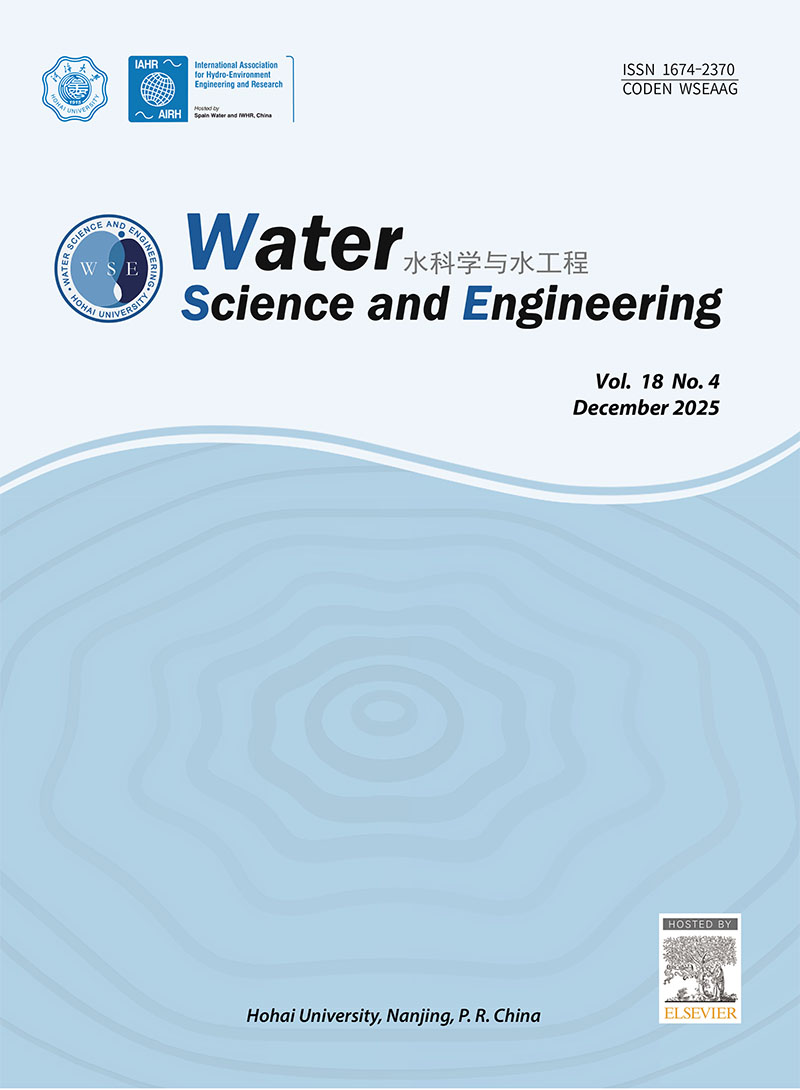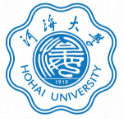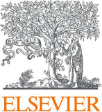![]() Guidance for Submission_2022.doc
Guidance for Submission_2022.doc
Water Science and Engineering (WSE), founded in 2008, is a scientific and technical periodical published quarterly in English and distributed globally. The journal is sponsored by Hohai University in China.
Aims and Scope
WSE aims to promote international exchange in academic research on water science and water engineering. It focuses on new concepts, theories, methods, and techniques related to water issues, and publishes the latest research in the fields of water resources, aquatic environment, aquatic ecology, and water engineering.
Submission Guidance
Authors should submit electronic manuscripts in Word format through the “Submission & Review” section of the journal’s website at http://wse.hhu.edu.cn.
Requirements for Manuscripts
1. Submitted manuscripts must be neither published nor under consideration for publication elsewhere.
2. Manuscripts should be written in concise and grammatical English.
3. Manuscripts are required to be arranged in Word format (paper size A4) in one column, with no more than 6000 words and maintained within 14 pages.
4. Manuscripts should be organized in the following order: title, author(s), affiliation(s), abstract, key words, introduction, research contents, results, conclusions, acknowledgements, and references, with sections clearly defined and numbered. Subsections should be numbered 1.1 (then 1.1.1, 1.1.2, …), 1.2, etc.
5. The title is preferred to be limited within 12 substantives. Only the initial of the first word needs to be capitalized, the others be lowercase letters (except proper nouns), and uncommon abbreviations and formulas should be avoided.
6. Authors’ given names should come before surnames. The initials of given names and surnames should be capitalized (e.g., John Quincy Abbot). For Chinese authors’ names, a hyphen is necessary between two given names (e.g., Cheng-li Zhang). There should be commas between authors’ names.
7. Authors’ affiliations should be listed, along with the full postal addresses of the institutions, below the author names. Please indicate all affiliations with a superscript number immediately after author’s name and in front of the appropriate address.
8. An abstract of more than 150 words (the title not repeated in the first sentence, and diagrams, formulas, and references not included), which gives prominence to the creative ideas, the work’s purposes, methods, major findings, conclusions, etc., is required.
9. Five to eight keywords should be included in the manuscript.
10. The International System of Units (SI) should be adopted in the manuscript. All units in the text, figures, tables, and calculations should be used consistently.
11. All variables symbolized by single letters should be in italics; standard functions and letters symbolizing constants should be in normal style; and letters symbolizing vectors, tensors, and matrices should be in bold italics. Each symbol presented in the paper for the first time should be defined. Characters in capitalized form or lowercase form in the text and formulas should be distinguishable. Letters, numbers, and signs used as either superscripts or subscripts should be clearly identified.
12. Figures and tables with proper design should be placed right after where they’re referred to in the text. Each figure or table should have a corresponding title and be numbered consecutively. Three-line tables are required to be used. Figures should be drawn in the format of ITF, JPG, AutoCAD or BMP for editing convenience. Variables in figures and tables should be in italics. Units of variables in normal style need to be put in parentheses, e.g., v (m/s).
13. Authors are requested to identify the financial support for their research and/or preparation of their manuscripts, and to provide titles and names of funding sources in a footnote of the first page and put the grant number in subsequent parentheses.
14. The author-date style is required to be used for citations in the text and the reference list.
(1) Citations in the text: If an author’s name is cited in the text, the publication year in parenthesis should follow the name of the author, e.g., Stoker (1992). If the results, rather than the name of the author(s), are cited, a. use the author’s name(s) followed by a comma and the publication year(s) in parenthesis for the citation of a publication with two or less authors, e.g., (Stoker, 1992), (Lyn and Goodwin, 1987; Stoker, 1992); b. use the first author’s name followed by “et al.,” for the citation of a publication with three or more authors, e.g., (Xie et al., 2004); and c. use a lowercase letter of “a, b, c…” following the year to distinguish the works that are published during the same year by the same author, e.g., (Zienkiewicz, 1995a, 1995b, 1995c).
(2) The reference list should include all published works referred to in the text, and arranged alphabetically by the authors’ surnames. All the authors of each reference should be listed. References include books, journals, conference proceedings, dissertations, etc. The following reference formats are generally used:
1) Books
Format 1: author(s) (surname(s) followed by capitalized initial(s) of given name(s), with all authors included), year of publication, name of book, edition (if not the first edition), publishing company, publishing place, and language in parenthesis (if not written in English).
e.g., Strunk Jr., W., White, E.B., 2000. The Elements of Style, fourth ed. Longman, New York.
Chen, S.Y., 1998. Engineering Fuzzy Set Theory and Application. National Defense Industry Press, Beijing (in Chinese).
Format 2: author(s) (surname(s) followed by capitalized initial(s) of given name(s), with all authors included), year of publication, title of paper, editor(s) followed by ed(s)., name of book, edition (if not the first edition), publishing company, publishing place, page numbers, and language in parenthesis (if not written in English).
e.g., Mettam, G.R., Adams, L.B., 2009. How to prepare an electronic version of your article. In: Jones, B.S., Smith, R.Z., eds., Introduction to the Electronic Age. E- Publishing Inc., New York, pp. 281–304.
2) Journals
Format: author(s), year of publication, title of paper, name of journal, volume number followed by issue number in parenthesis, cited pages, language in parenthesis (if not written in English), and doi number.
e.g., Chopra, A.K., Chakrabarti, P., 1981. Earthquake analysis of concrete gravity dams including dam-water-foundation rock interaction. Earthquake Engineering and Structural Dynamics. 9(4), 363–383. https://doi.org/10.1002/eqe.4290090406.
3) Conference Proceedings and Symposiums
Format: author(s), year of publication, title of paper, name of symposium/conference, publishing company, publishing location, cited pages, and doi number (if it has one).
e.g., Berkhoff, J.C.W., 1972. Computation of combined refraction and diffraction. In: Proceedings of the 13th International Conference on Coastal Engineering. ASCE, Vancouver, pp. 745-747.
4) Dissertations
Format: author(s), year of publication, thesis title, institution, publishing location, and language in parenthesis (if not written in English).
e.g., Liu, C.J., 2004. Experimental Study on Unsteady Open-channel Flow and Bed-load Transport Properties. Ph. D. Dissertation. Tsinghua University, Beijing (in Chinese).
5) Others (criteria, reports, electronic bulletins, newspapers, and patents)
Report: Zhu, L.J., Cheng, N.S., 1993. Settlement of Sediment Particles. River and Harbor Engineering Department, Nanjing Hydraulic Research Institute, Nanjing (in Chinese).
Electronic bulletin: e.g., Turcotte, D.L., 1992. Fractals and Chaos in Geology and Geophysics. Cambridge University Press, New York. http//www.seg.org/reviews/mccorm30.htm [Retrieved Sep. 23, 1998].
Standard: e.g., China Building Materials Industries Association (CBMIA). 1999. Method of Testing Cements-Determination of Strength (GB/T17671-1999). Standards Press of China, Beijing (in Chinese).
Patent: e.g., Norman, L.O., 1998. Lightning Rods. US Patent 4379752, 9 Sept.,1998.
Peer Review Guidance
1. Please make a general evaluation on the academic level of the paper and point out its significance in theory and practice. Please present your opinion on whether this paper is suitable for publication in Water Science and Engineering. For papers that are considered unsuitable for publication in Water Science and Engineering, please present the reasons for rejection.
2. In the introduction section, please pay much attention to whether there is sufficient literature review on the latest advances in related issues around the world, and whether the authors give a specific description about their innovation.
3. WSE refuses to accept papers in which the work described has been published before, or is under consideration for publication elsewhere. Falsification, plagiarism, and confidentiality issues are unacceptable. If you find any of the abovementioned problems, please point it out verbatim.
4. If you make some modifications on the reviewed paper, please upload your revised paper. For papers that are considered suitable for publication but need modifications by the authors, please provide detailed suggestions on how to improve the papers.
5. Please evaluate the language of manuscripts. If a manuscript has many English language issues, you may suggest that the authors should consider resubmitting to WSE after language improvements.








